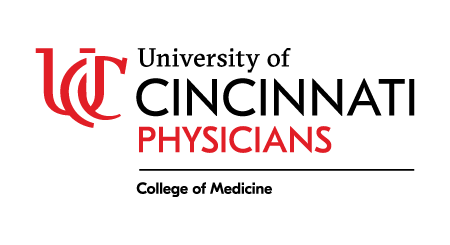
UC College of Medicine: Supporting the Cincinnati community for two centuries
A third of local doctors graduated from or were trained at the UC College of Medicine

The University of Cincinnati College of Medicine has served the Greater Cincinnati community for more than 200 years. From caring for the everyday health of people throughout the region — and from many parts of the country — to educating thousands of physicians, to making critical discoveries in the laboratory that have saved the lives of untold numbers of people around the world, the college has been indispensable.
The medical school was founded in 1819 by Dr. Daniel Drake as Ohio’s first medical school and was known for much of its first 100 years as the Medical College of Ohio. The first class of seven physicians graduated in 1821 and, unlike numerous other medical colleges that called Cincinnati home during the 19th century, it survives today as a college of the University of Cincinnati. Throughout the years it absorbed many of the city’s medical schools until it became part of UC in 1896. Today, it is the second-oldest public college of medicine in the country.

Throughout its 204-year-history, nearly 16,800 physicians have graduated from the College of Medicine, with many remaining in the region to care for area residents. Today about a third of physicians in the community are graduates of the College of Medicine or were trained in one of the college’s 28 residency and 65 fellowship training programs that provide medical school graduates from UC and other U.S. and foreign medical schools specialty training. The College of Medicine and UC Medical Center have 707 physicians in residency and fellowship training programs. The college also provides continuous medical education to more than 67,000 doctors and health care professionals from the region and around the country to maintain their medical licenses and stay current on the latest medical knowledge.
Physicians are not the only students minted at the College of Medicine. There are 573 graduate students in 26 doctoral and master’s programs. These students will go on to become biomedical researchers at academic institutions, pharmaceutical and biotech companies and federal and state laboratories across the country. The college also is one of the few medical schools in the country to offer undergraduate programs. Currently, more than 500 students are enrolled in public health and the highly competitive Medical Sciences Program, which since 2013 has provided students with an education preparing them for medical, biomedical, pharmacy, nursing, veterinary and other doctoral programs.

The more than 900 faculty physicians at the College of Medicine, along with about 500 advanced practice providers, comprise University of Cincinnati Physicians. All clinical faculty, staff physicians and other non-physician clinicians at the college practice within their specialty through UC Physicians. Together, as part of the UC family, UC Health, UC Physicians and the College of Medicine make up the academic medical center affiliated with the University of Cincinnati. These entities work together to support the tripartite missions of clinical care, research and education for the University of Cincinnati. The college has another 1,200 affiliated faculty, including physicians and researchers at Cincinnati Children’s Hospital Medical Center, who form the college’s Department of Pediatrics, in addition to others at the Cincinnati Veterans Affairs Medical Center and many community physicians throughout the area. All join in the teaching of College of Medicine students.
The clinical practices of the College of Medicine span the entire spectrum of subspecialty patient care. The regional, national and international reputation of these programs provides a rich environment to support the college’s academic mission including medical education and scientific discovery. Each year, providers total more than 2.2 million patient visits and perform more than 877,000 procedures and diagnostic tests.
The 445,788-square-feet of research laboratories featuring some of the most advanced scientific equipment is where discoveries are made by College of Medicine faculty researchers. For example, the college recently began using cryogenic electron microscopy, or Cryo-EM, which can determine the 3D structure of molecules. The college’s 288 doctoral faculty along with physician-scientists investigate cancer, neurological, cardiovascular and psychiatric disorders and infectious diseases, in addition to many other diseases. Faculty researchers hold more than $162 million in grants and contracts and also conduct hundreds of clinical trials, offering people throughout the community access to the latest treatments and procedures under investigation.
The faculty of the College of Medicine, supported by more than 1,200 staff members, work daily to improve the health of the Cincinnati community, educate the next generation of physicians and biomedical scientists and discover the causes of disease and the new treatments to cure them.
Learn more at med.uc.edu.
 Cryo-EM provides images of the tiniest molecules
Cryo-EM provides images of the tiniest molecules Women leaders abound at UC College of Medicine
Women leaders abound at UC College of Medicine